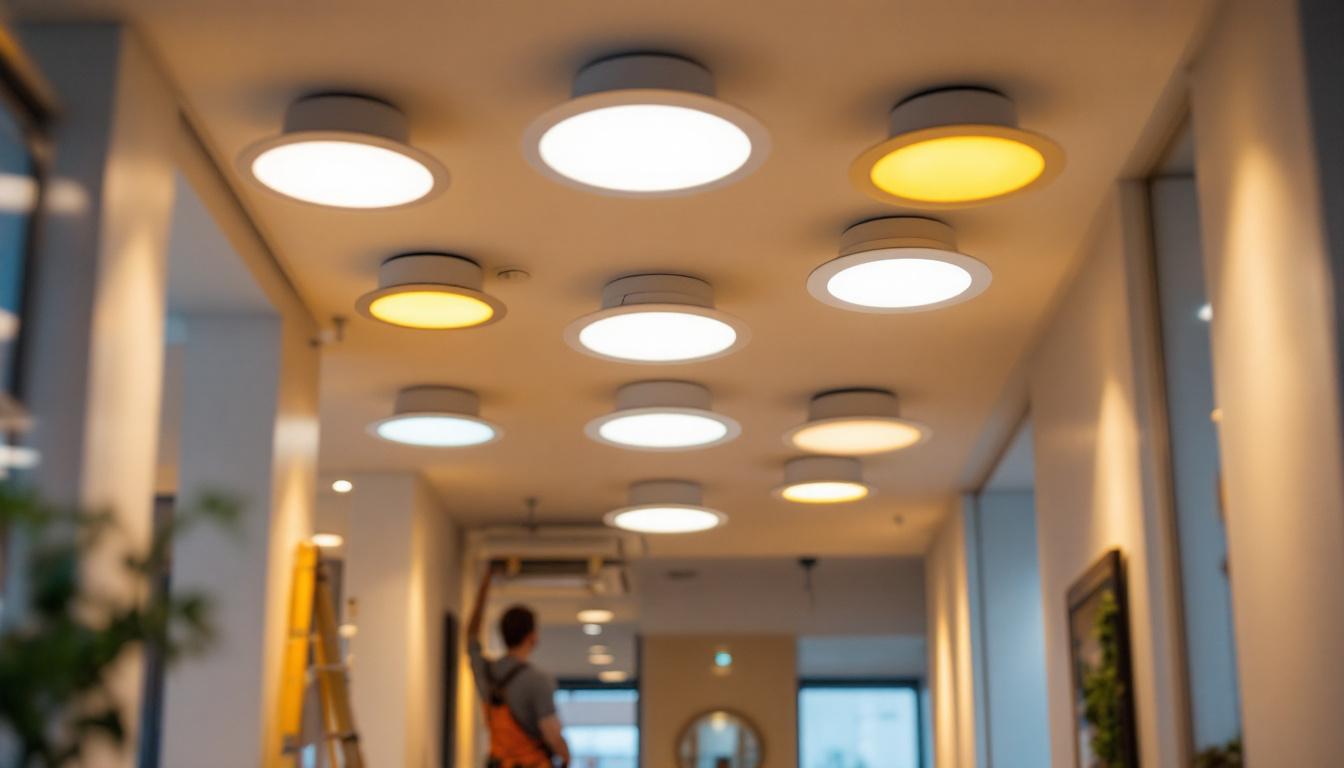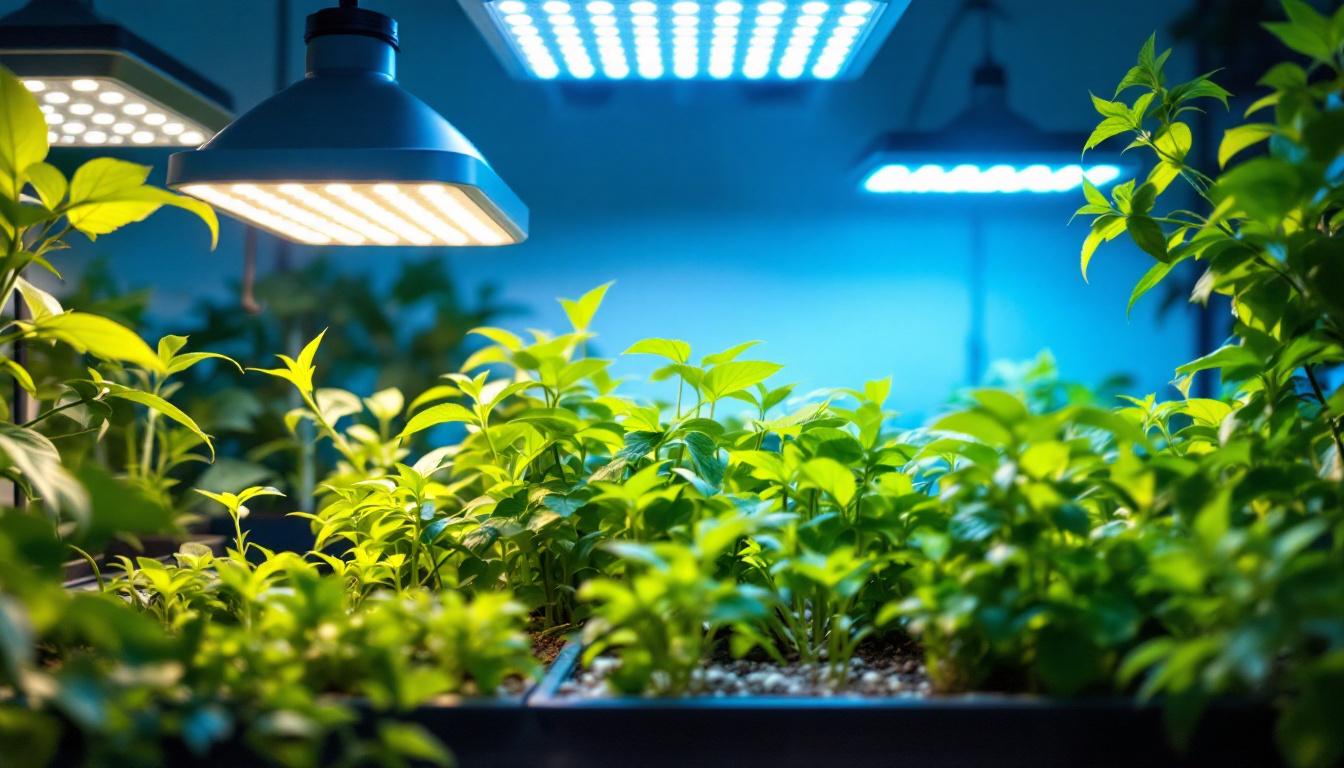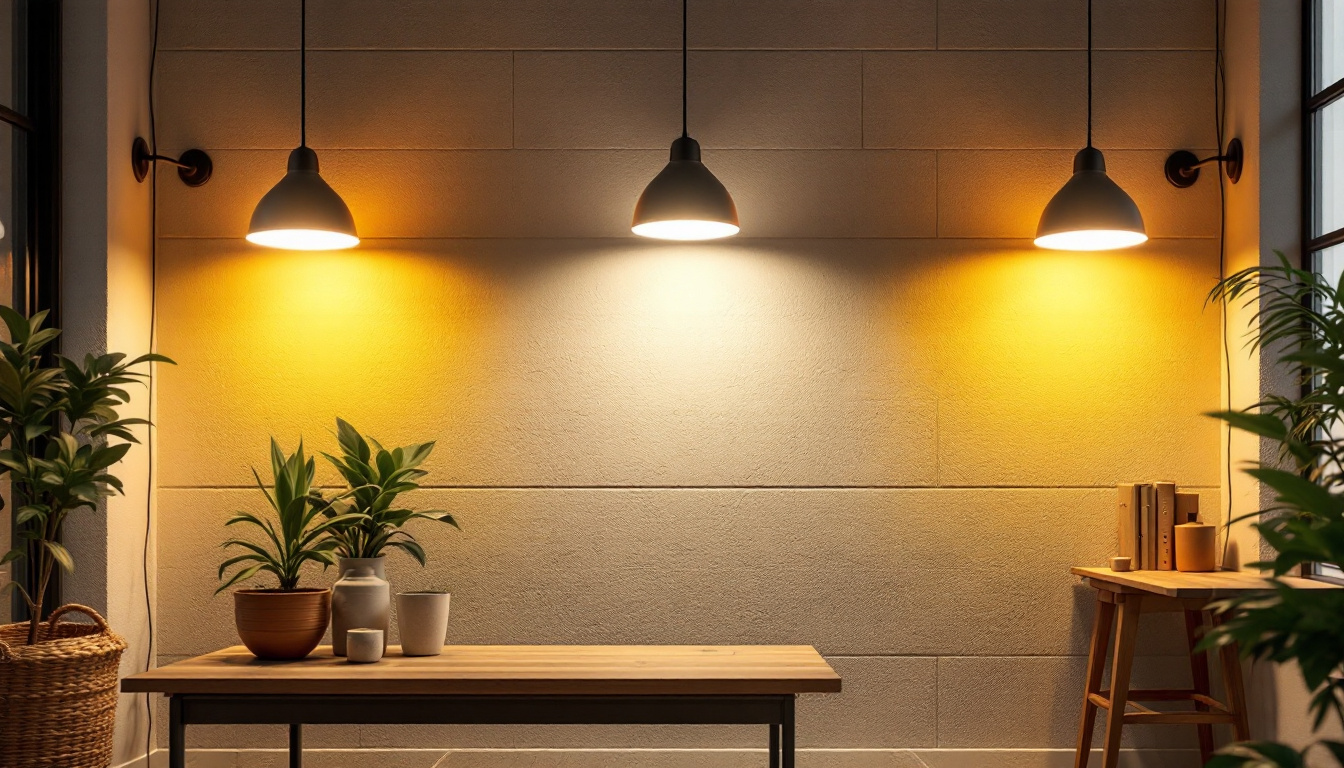
In the realm of modern lighting solutions, LED downlights have emerged as a popular choice among homeowners and businesses alike. Their energy efficiency, long lifespan, and versatility make them an ideal option for various applications. However, for lighting contractors, understanding the best practices for installing and utilizing LED downlights is crucial to delivering optimal results. This article outlines eight essential best practices that every lighting contractor should consider when working with LED downlights.
LEDs, or Light Emitting Diodes, differ significantly from traditional incandescent and fluorescent bulbs. They convert electricity into light more efficiently, which results in lower energy consumption and reduced heat output. This efficiency not only saves on electricity bills but also extends the lifespan of the lighting fixture. Understanding these differences is vital for contractors when advising clients on the benefits of LED downlights. Moreover, LEDs are highly versatile and can be used in a variety of applications, from residential to commercial settings. Their compact size allows for innovative designs, enabling architects and designers to create unique lighting solutions that enhance the aesthetic appeal of any space.
Color temperature, measured in Kelvins (K), plays a crucial role in the ambiance created by lighting. LED downlights are available in a range of color temperatures, from warm white (around 2700K) to cool white (up to 6500K). Additionally, the Color Rendering Index (CRI) measures how accurately a light source displays colors compared to natural light. A CRI of 90 or above is generally recommended for residential and commercial applications to ensure vibrant and true color representation. Understanding these aspects can significantly influence the mood of a room; for instance, warmer tones are often preferred in living spaces to create a cozy atmosphere, while cooler tones are ideal for workspaces where focus and clarity are paramount. Furthermore, many modern LED fixtures now offer adjustable color temperatures, allowing users to customize their lighting to suit different activities throughout the day.
When selecting LED downlights, it is essential to consider the lumen output, which measures the brightness of the light. The required lumens will vary depending on the application and the size of the space. For instance, a kitchen may require brighter lighting than a living room. Understanding the specific needs of each area will help contractors recommend the right downlight for optimal illumination. For example, a standard kitchen might need around 300-400 lumens per square meter to ensure adequate visibility for cooking and food preparation, while a cozy reading nook may only require about 150-200 lumens per square meter to create a warm, inviting atmosphere. It’s also worth noting that the color temperature of the light, measured in Kelvins, can significantly influence the perceived brightness and mood of a space. Warmer tones (2700K-3000K) can create a relaxing environment, while cooler tones (4000K-5000K) can enhance focus and alertness, making them ideal for workspaces.
LED downlights come in various designs and sizes, from recessed fixtures to surface-mounted options. The choice of fixture should align with the aesthetic preferences of the client as well as the functional requirements of the space. Additionally, ensuring that the size of the downlight is appropriate for the ceiling height and space dimensions is critical for achieving a balanced lighting effect. For instance, larger fixtures may be more suitable for high ceilings, where they can provide sufficient light spread without being overbearing. Conversely, smaller fixtures can be used in lower ceilings to avoid a cramped feeling. Furthermore, the trim style of the downlight—whether it’s baffle, reflector, or adjustable—can also impact the overall look and functionality. Adjustable downlights, for example, can be angled to highlight artwork or architectural features, adding depth and interest to the room. It’s essential to consider both the visual impact and the practical application of the chosen fixtures to ensure they meet the client’s expectations and enhance the overall design of the space.
Each LED downlight may come with specific installation instructions provided by the manufacturer. Adhering to these guidelines is essential to ensure the fixture operates correctly and safely. This includes considerations for electrical connections, mounting methods, and any necessary adjustments for dimming capabilities. Additionally, it’s important to familiarize yourself with the warranty terms, as improper installation can void the warranty and lead to costly repairs or replacements. Taking the time to read through the documentation can save you from potential pitfalls and ensure that the installation process is as smooth as possible.
Although LEDs generate less heat than traditional bulbs, they still require proper heat dissipation to maintain performance and longevity. Ensuring adequate ventilation around the fixture and using products designed with heat sinks can prevent overheating and extend the lifespan of the downlight. Contractors should also be aware of the insulation contact (IC) rating of the fixtures to ensure compliance with local building codes. Furthermore, it’s beneficial to assess the surrounding environment where the downlights will be installed; for instance, in areas with high ceilings or enclosed spaces, additional measures such as using thermal barriers or heat-resistant materials may be necessary to optimize performance. Understanding the thermal dynamics of the installation space can significantly enhance the efficiency and durability of the lighting solution.
One of the most significant advantages of LED downlights is their energy efficiency. By replacing traditional lighting with LEDs, clients can significantly reduce their energy consumption. Contractors should emphasize these savings when discussing options with clients, highlighting the potential return on investment through lower utility bills.
In addition to energy savings, many LED downlights are manufactured with sustainable materials and are free from harmful substances like mercury. Promoting eco-friendly lighting solutions aligns with the growing demand for sustainable practices in both residential and commercial settings. Contractors can enhance their reputation by offering environmentally responsible options to clients.
Dimming capabilities can greatly enhance the versatility of LED downlights. There are various dimming technologies available, including leading-edge, trailing-edge, and digital dimming. Each type has its advantages and compatibility considerations. Contractors should be well-versed in these options to provide clients with the best solutions for their specific needs.
With the rise of smart home technology, integrating LED downlights with smart controls has become increasingly popular. This allows users to adjust lighting levels remotely or set schedules for automated lighting. Contractors should stay informed about the latest smart lighting technologies and be prepared to offer installation services that cater to this growing trend.
While LED downlights generally require less maintenance than traditional lighting, educating clients on proper care is still important. This includes cleaning the fixtures regularly to prevent dust buildup, which can impact light output. Contractors can provide clients with guidelines on how to maintain their downlights for optimal performance.
Encouraging clients to monitor the performance of their LED downlights can help identify any issues early on. If a downlight flickers or dims unexpectedly, it may indicate a problem with the fixture or the electrical system. Contractors should be prepared to troubleshoot these issues and provide solutions as needed.
Lighting contractors must be aware of local building codes and regulations regarding lighting installations. These codes often dictate requirements for energy efficiency, safety, and accessibility. Ensuring compliance not only protects the contractor but also provides peace of mind to clients, knowing that their installation meets all necessary standards.
The lighting industry is continually evolving, with new technologies and standards emerging regularly. Contractors should commit to ongoing education and training to stay abreast of these changes. This knowledge allows them to provide clients with the most current and effective solutions available.
Effective communication with clients is essential for successful lighting projects. Contractors should take the time to explain the benefits and limitations of LED downlights, setting realistic expectations regarding performance and installation timelines. This transparency fosters trust and ensures a smoother project experience.
After the installation is complete, offering ongoing support can enhance client satisfaction. This may include follow-up visits to assess performance, answering questions, or providing additional resources on lighting usage. Building a strong relationship with clients can lead to repeat business and referrals, further establishing the contractor’s reputation in the industry.
Implementing these best practices for LED downlights will not only enhance the quality of installations but also elevate the overall client experience. As the demand for energy-efficient and sustainable lighting solutions continues to grow, lighting contractors who prioritize education, compliance, and communication will position themselves as leaders in the industry. By embracing these best practices, contractors can ensure that they provide exceptional service while meeting the evolving needs of their clients.
In summary, understanding LED technology, selecting the right products, employing proper installation techniques, promoting energy efficiency, and maintaining strong communication with clients are all critical elements of successful LED downlight projects. By incorporating these practices into their workflow, lighting contractors can achieve outstanding results and foster long-lasting relationships with their clients.
Ready to elevate your lighting projects with the best LED downlights in the market? Look no further than LumenWholesale, where we provide contractors with exceptional, spec-grade lighting products at unbeatable wholesale prices. Our commitment to quality, affordability, and convenience ensures that you have access to a vast selection of reliable, high-performance lighting solutions for every application. Say goodbye to inflated markups and hello to hassle-free bulk buying with free shipping. Don’t compromise on your lighting needs. Experience the perfect blend of quality and value today by visiting Wholesale Lighting at the Best Value and start transforming your lighting installations with LumenWholesale.

Discover the ultimate guide for lighting contractors on selecting the perfect Growers Choice Lights.

Discover how using light brightness as a percentage can revolutionize your lighting installation projects.

Discover why troffer lights are essential for any successful lighting project.

Discover how cabinet lights with remote control features can enhance your service offerings and boost profits.